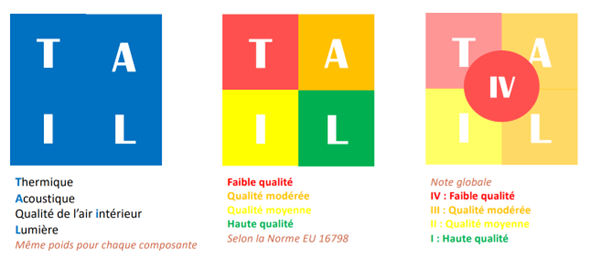TAIL INDICATOR
How to measure indoor air quality?
How to measure indoor air quality?
TAIL is an indicator for assessing the Indoor Environmental Quality (IEQ) in commercial buildings in operation. It was developed within the framework of the ALDREN project.
This indicator completes the Indoor Air Quality (IAQ) aspect by integrating three additional bricks: thermal comfort, acoustic/sound comfort and visual comfort.
TAIL was originally designed to be used before and after energy renovations in tertiary buildings in order to assess user comfort.
The objectives of TAIL are to
The European project ALDREN (ALliance for Deep RENovation in buildings), led by the CSTB (Centre Scientifique et Technique du Bâtiment), aims to implement a common European voluntary certification system as an integral part of any energy renovation.
The main objective of the ALDREN project is to promote the energy renovation of buildings in Europe by providing indicators and tools to guarantee the expected performance, including health quality.
Read more: https://aldren.eu/
The TAIL indicator is based on 4 components:
The indicator classifies each category according to 4 levels:

The ranking by indicator is determined according to the Indoor Air Quality Guide Values (WHO) and the European standard NF EN 16798 (2019), which deals with indoor environmental parameters for thermal environment, indoor air quality, lighting and acoustics.
Based on the colour levels assigned, an overall score out of 4 is given, qualifying the overall level of indoor environmental quality. The lower the number, the better the Indoor Environmental Quality (IEQ).
15/06/2022
expertise to support you, from the diagnosis to the implementation of your solution
Subscribe to our newsletter!
Your e-mail address is only used to send you our newsletter and information about our company. You can unsubscribe at any time using the link included in each email.
